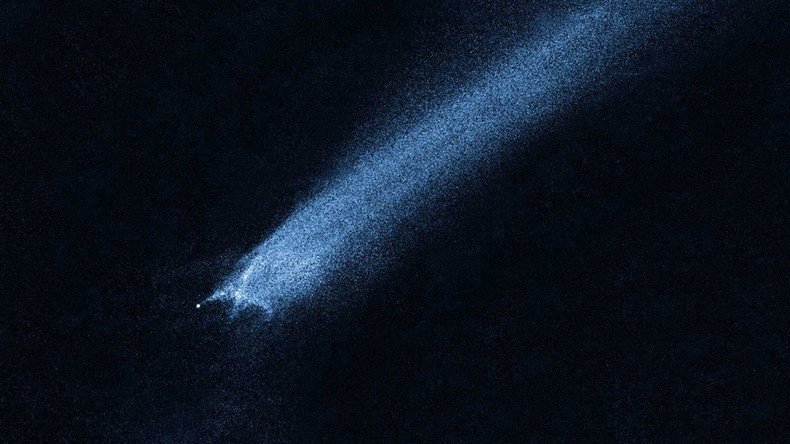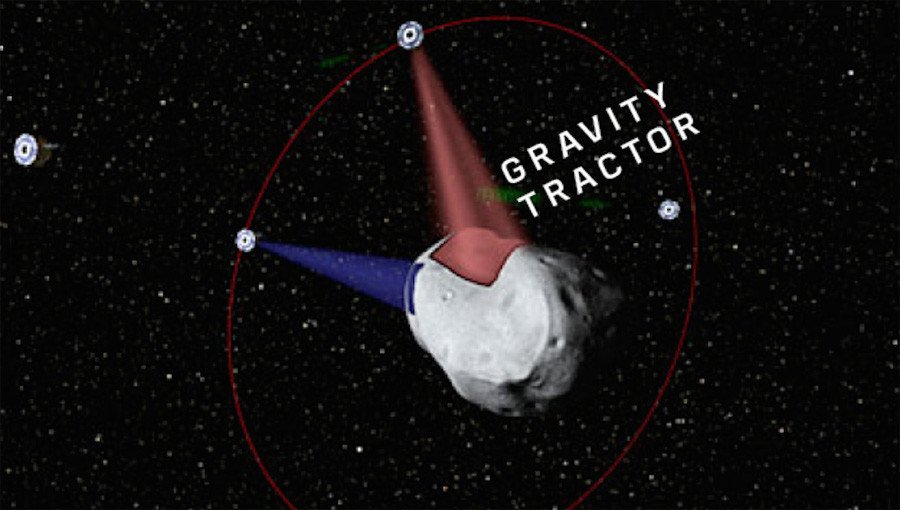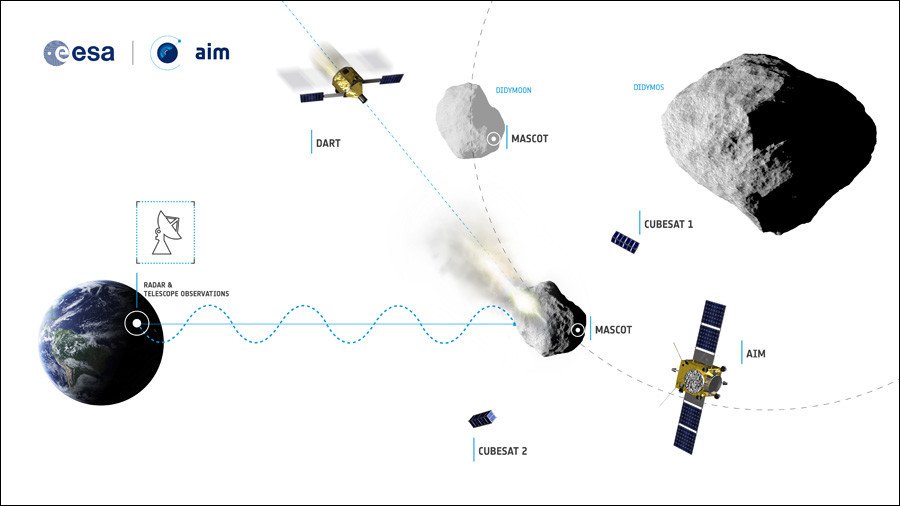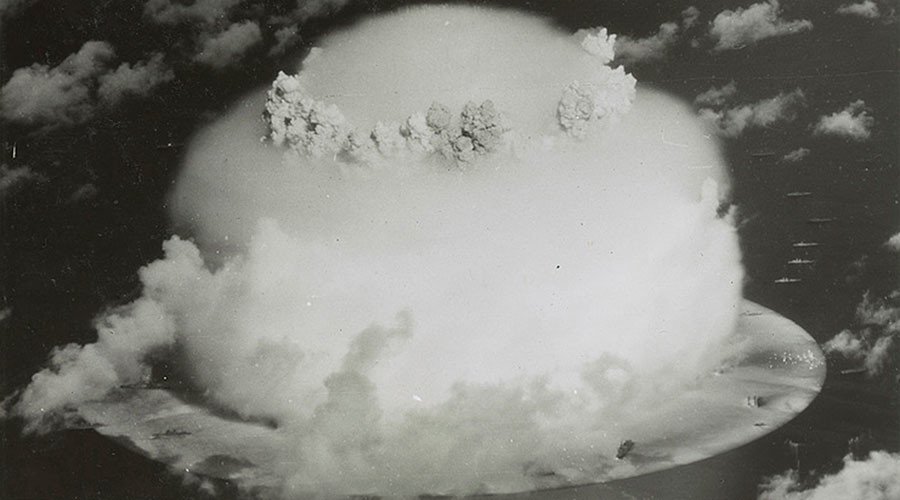Divert, intercept, destroy: 4 ways NASA plans to save us from Earth-bound asteroids (PHOTOS)

Hollywood movies have long dramatised the threat of Earth being wiped out in by an asteroid discovered at the 11th hour, only for disaster to be averted by all-American heroes such as Bruce Willis, Ben Affleck or a gristly Robert Duvall.
As NASA’s Planetary Defense Coordination Office uses the asteroid “2012 TC4” to test its ability to respond to the existential threat posed by Near Earth Objects (NEOs), we look at four methods the international community hopes could one day help us avoid going the way of the dinosaurs.
1. Gravity Tractor
As there are no known weapons powerful enough to destroy an asteroid on short notice, NASA believes the safest way to avoid a cataclysmic event is to develop its early warning system.
An Earth-bound asteroid would need to be spotted decades in advance if scientists are to have a chance of stopping a disaster. Indeed, scientists would need a similar amount of time just to assess the object’s composition and decide which of its theoretical deflection techniques to use before launching a mission that might only move the rock less than an inch per second off course.

If an asteroid is spotted early enough, it could be possible to divert its path using the gravity from an orbiting spacecraft, according to NASA. In some future mission, a Gravity Tractor could fly alongside the rock for a period of decades, slowly pulling it to a safe area of space where the object could be studied or mined for commercial purposes.
The potentially expensive and time-consuming project remains in the pre-planning stages.
2. Laser Ablation
In February 2013, the Chelyabinsk Meteor provided a timely reminder of the threat of NEOs when the object entered the Earth’s atmosphere undetected, exploding over western Russia with a force 20-30 times stronger than the Hiroshima bomb.
In the future, objects such as Chelyabinsk could be subjected to “Laser Ablation,” a technique in which lasers are used to irradiate the surface of an asteroid, transforming it from a solid mass to a gas. Research from the University of Strathclyde's Advanced Space Concepts Laboratory shows that harnessing solar rays to power a swarm of laser-carrying spacecraft is, theoretically, possible.
Turning rock into gas would eliminate fragmentation which could present a further threat to Earth. There would also be no need to perform the technically tricky maneuver of landing on the moving object’s surface.
3. Kinetic Impactor
Scientists believe a “kinetic impactor,” essentially a rocket used to ram an asteroid off course, could be effective against larger Earth-bound objects. There is even a mission scheduled to launch in the near future to test the feasibility of the technique.
Set to launch in October 2020, the joint NASA-ESA Asteroid Impact and Deflection Assessment Mission will send two vessels into space to intercept the asteroid Didymos as it comes near to Earth in 2022.

First, the NASA-led Double Asteroid Redirection Test (DART) will crash into the asteroid while . the second spacecraft, the ESA’s Asteroid Impact Mission (AIM), orbits the rock and performs an analysis of the kinetic impact of the crash. It’s hoped that AIM will return valuable new information that could aid a future planetary defense effort.
Any shifting of the Didymos asteroid that may occur would also mark the first time that humanity has significantly altered the path of a body in the Solar System.
4. Nuclear Impactor
Viewed as a method of last resort, the nuclear option to deflect asteroids away from Earth would present an ethical and political challenge. Students from Massachusetts Institute of Technology, working on a class project, developed the first public study of the nuclear impactor method in 1967.

In what has become known as Project Icarus, the students suggested that NASA take the first six Saturn V rockets earmarked for the moon program and add a 44,000lb nuclear warhead to each.
According to Wired, the team set out a delivery system where first Saturn-Icarus rocket would be launched at the asteroid 13 days before Earth-impact, and the second 10 days before – and so on. The project was said to have a 71 percent chance of completely protecting the Earth, and an 86 percent chance of reducing the damage of a full impact.
However, the 1966 Outer Space Treaty prohibits the use of weapons of mass destruction in space, meaning an international consensus would first have to be reached before launching a battery of nuclear warheads at any Earth-bound space rock.












